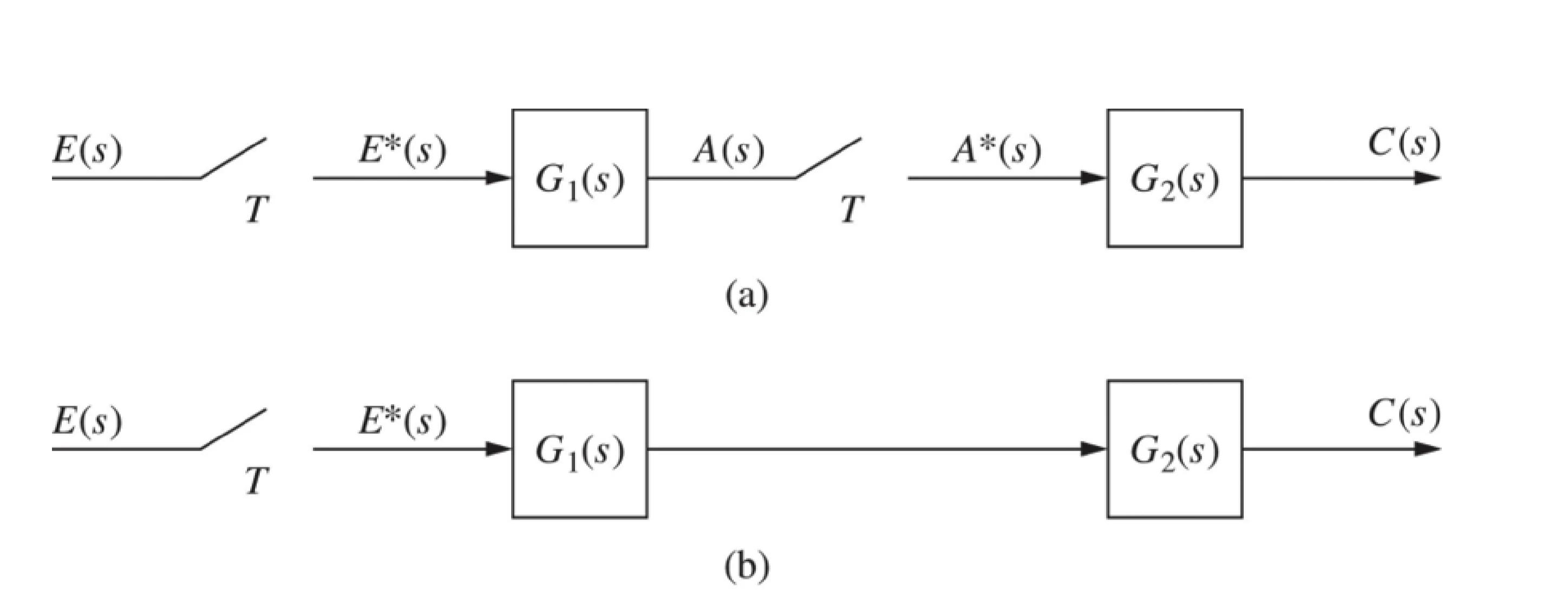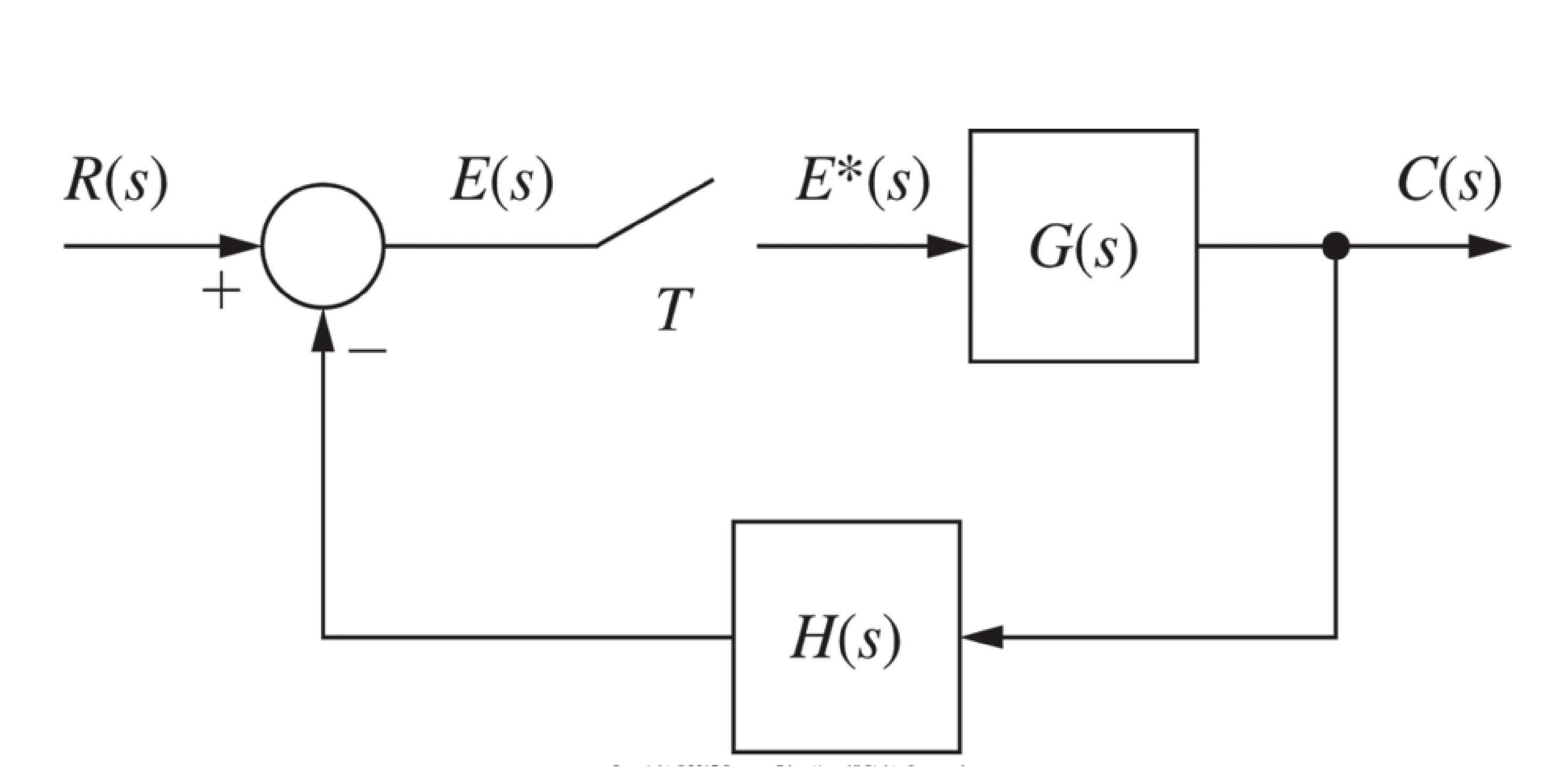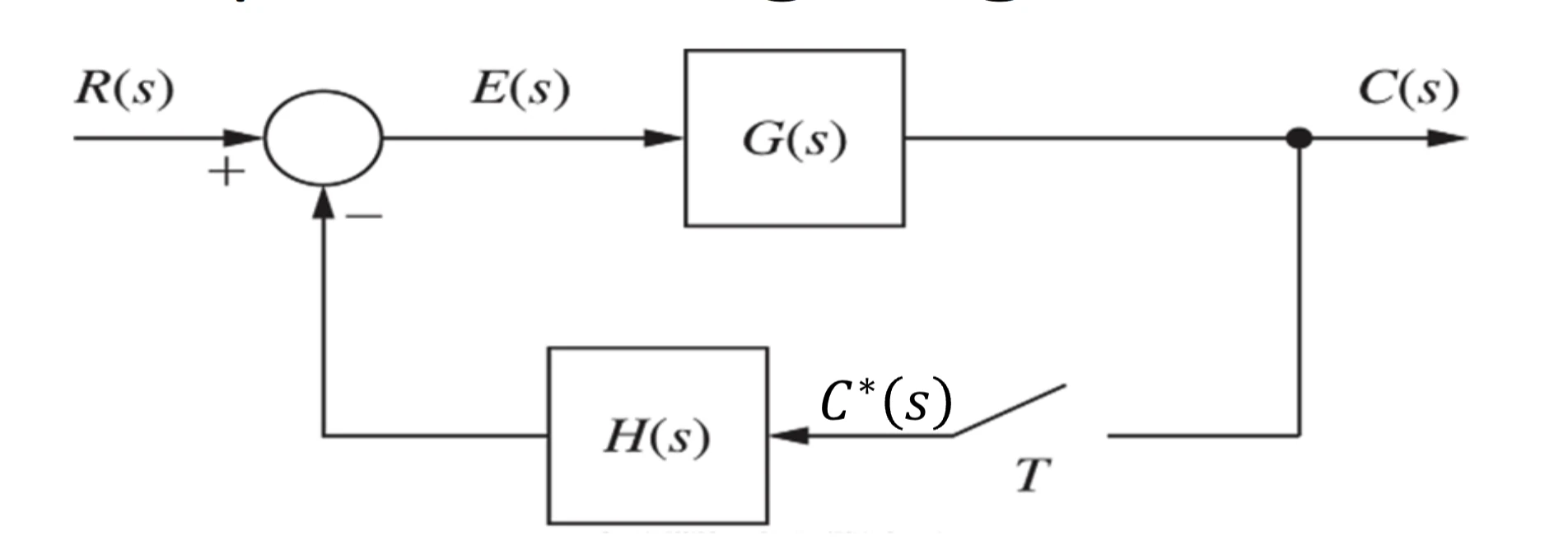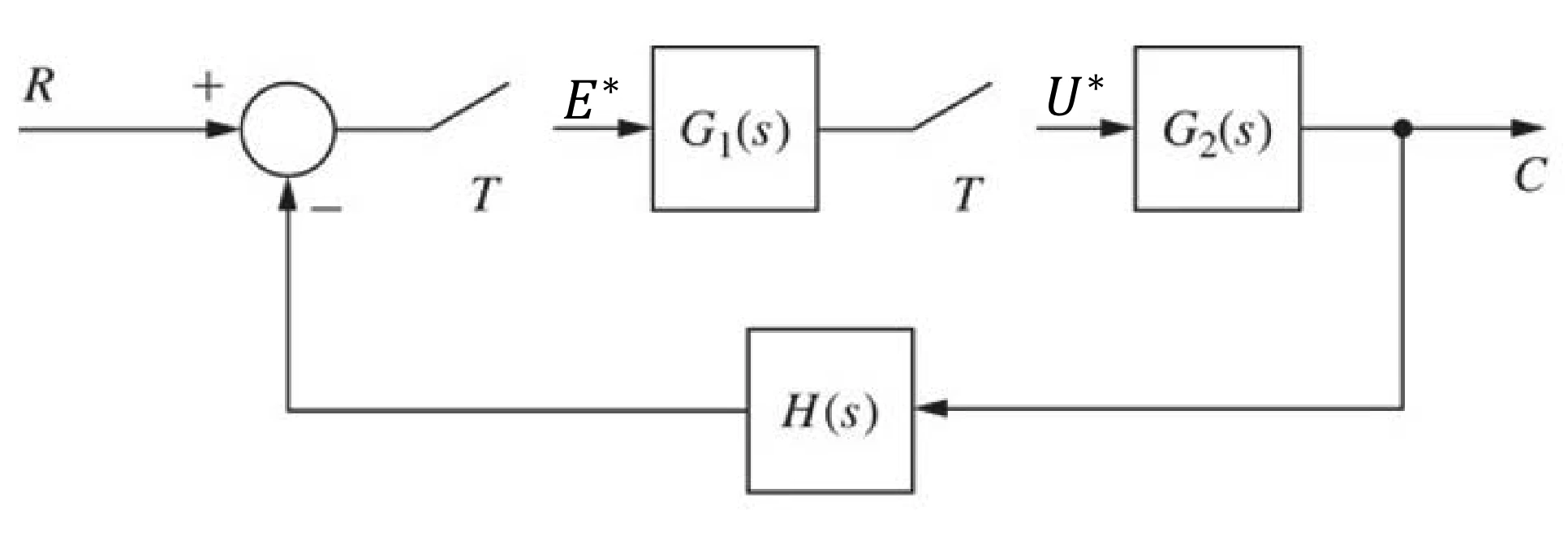closed loop system
For determine discrete systems and vice versa.
G(z) with a Zero-Order hold
G(z)=(1−z−1)Z[sGp(s)]=G∗(z)−z−1G∗(z)
example: Find G(z) if Gp(s)=s+1s+2
G∗(s)g∗(t)g∗(kT)G∗(z)=z−12z−z−e−Tz=sGp(s)=s2−s+11=2−e−t(inverse Laplace transform)=2−e−kT
block diagram reduction

a. C(z)=G1(z)G2(z)E(z)
b. C(z)=Z[G1(s)G2(s)]E(z)
The product of G1(s)G2(s) must be evaluated first
model for Open-loop system
The output of open-loop system is
C(z)=G(z)D(z)E(z)

closed loop sample data system
E(z)=R(z)−Z[G(s)H(s)]E(z)∵R(z)C(z)=1+Z[G(s)H(s)]G(z)

using digital sensing device
C(z)=1+Z(G(s)H(s))Z[G(s)R(s)]

using digital controller
R(z)C(z)=1+G1(z)Z(G2(s)H(s))G1(z)G1(z)

time response
T(z)=1+G(z)G(z)


